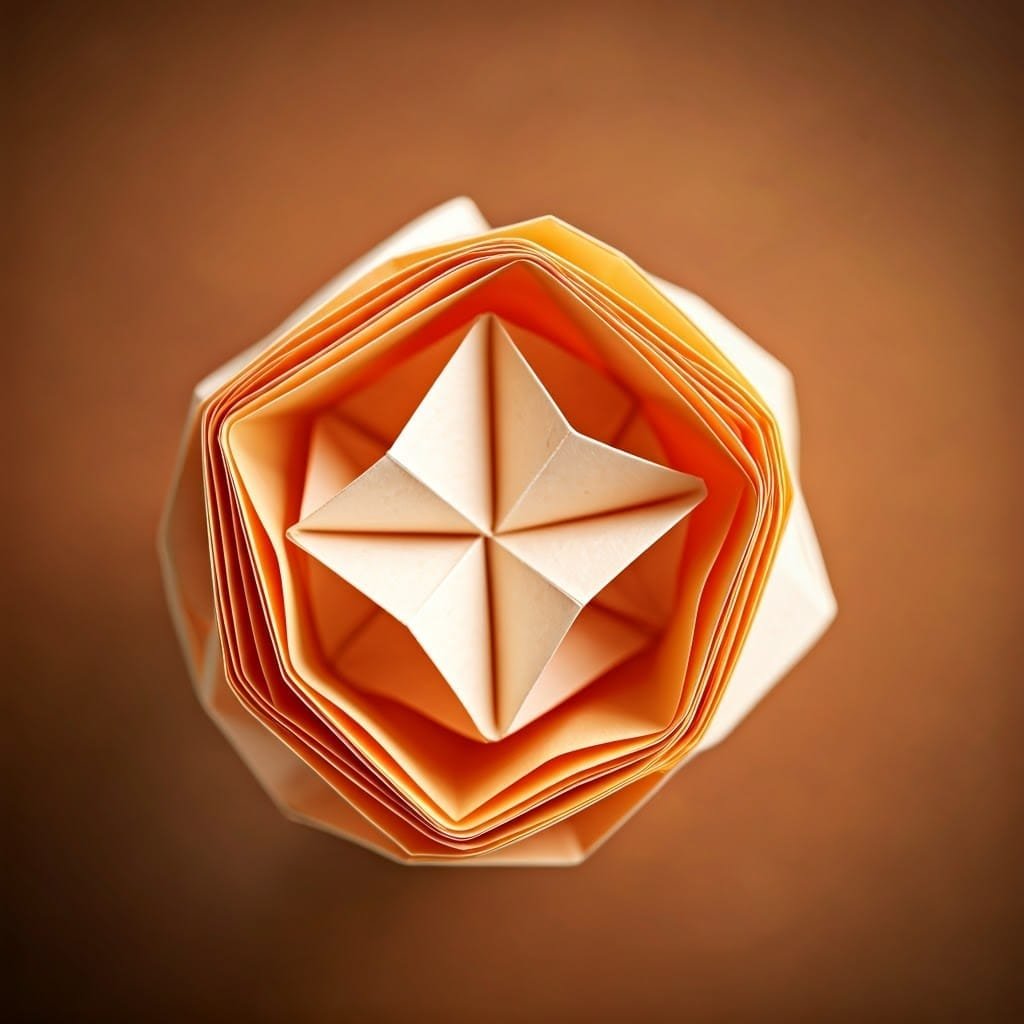Your cart is currently empty!
Stay in Touch!
Get updates about new artwork and upcoming events.
Get updates about new artwork and upcoming events.
—
by
The journey to developing a distinctive artistic voice is one of discovery, experimentation, and self-reflection. For origami artists, this path mirrors the art itself—intricate, layered, and deeply rewarding. Whether you’re just beginning to fold or are seeking to refine your craft, understanding how to develop your unique style is an essential step toward creating work that truly resonates.
Let’s explore the process of finding your creative voice in origami and how each stage contributes to shaping an artist’s identity.

Every journey begins with mastering the basics. In origami, precision is paramount. Clean, crisp folds are the hallmark of professional work, laying the groundwork for more advanced techniques and personal expression.
Start by focusing on simple models to practice control and precision. Origami requires attention to detail and patience—qualities that naturally enhance your skills over time. By dedicating yourself to these fundamentals, you’ll create a strong foundation from which your artistic voice can flourish.
Mastery of basic folding techniques also builds muscle memory, allowing you to execute more complex designs with ease. Practice folding common models like the crane or the waterbomb base to refine your ability to create symmetry and consistency in your work.
Innovation in origami often arises from experimentation. Altering existing designs, exploring new techniques, and embracing mistakes can lead to unexpected and exciting results. Here are some ways to spark creativity through experimentation:
Experimentation allows you to step outside the boundaries of traditional origami and begin shaping a style that feels authentically yours. Don’t be afraid to take risks and let your imagination guide your hands.

To push the boundaries of your craft, a deeper understanding of origami’s technical principles is essential. Concepts such as tree theory, box pleating, and crease patterns provide a framework for designing intricate models and refining your skills. Resources like Robert Lang’s Origami Design Secrets offer valuable insights into the mechanics of origami design, helping artists translate their vision into reality.
Technical mastery isn’t just about creating complex designs; it’s about understanding how origami works at its core. By learning these principles, you’ll gain the confidence to innovate and experiment with greater intention. Understanding crease patterns, for example, allows you to analyze and deconstruct designs, providing a blueprint for your own creations.
Art doesn’t happen in isolation. Engaging with other origami enthusiasts is a powerful way to spark creativity, receive feedback, and discover new ideas. Joining forums, Discord servers, or local groups can connect you with a supportive community that shares your passion.
Origami communities often host challenges, share resources, and celebrate each other’s work. These interactions can inspire fresh perspectives and encourage you to explore techniques or styles you might not have considered on your own.
Attending origami conventions or workshops is another excellent way to immerse yourself in the craft. These events offer opportunities to learn from masters, showcase your work, and connect with like-minded individuals.

As you grow as an artist, you may find yourself drawn to a particular style or technique. Specializing in a niche, whether it’s tessellations, minimalist Pureland folding, or expressive wet folding, allows you to hone your skills and develop a signature approach.
Specialization doesn’t mean limiting yourself. Instead, it’s about focusing your energy on what excites and challenges you most. By dedicating yourself to a specific area, you can create work that stands out and feels uniquely yours.
Your niche might also reflect your personal experiences or interests. For instance, some artists draw inspiration from nature, architecture, or cultural traditions, integrating these elements into their designs to create a meaningful body of work.
Keeping a portfolio of your work is an invaluable practice for any artist. Not only does it allow you to track your development, but it also showcases your unique style to others. A portfolio serves as a visual narrative of your journey, highlighting the evolution of your skills, techniques, and artistic voice.
As you review your portfolio over time, you may notice patterns and themes emerging. These insights can guide your creative direction and help you refine your niche. Consider photographing your work with attention to lighting and composition to best showcase its details and artistry.

Origami is more than a technical skill; it’s a form of storytelling. Each fold, crease, and structure carries meaning, whether intentional or subconscious. For many artists, their work reflects personal journeys, emotions, and experiences.
Finding your artistic voice involves balancing technical mastery with emotional expression. It’s about using your skills to tell stories that resonate with you and your audience. When your work reflects your authentic self, it becomes not only unique but deeply meaningful.
For example, an artist might use color gradients and modular designs to convey themes of transformation and growth. These elements not only add visual appeal but also communicate a deeper narrative.
For me, origami is a medium of resilience and transformation. Each sculpture I create reflects my journey of growth and self-discovery, blending technical precision with deeply personal narratives. Experimentation, community, and self-reflection have all played vital roles in shaping my artistic voice.
My work often incorporates modular designs and vibrant colors, inspired by themes of overcoming adversity. By focusing on these elements, I’ve developed a style that feels both authentic and distinctive. Documenting this journey through portfolios and exhibitions has allowed me to share my story with others and connect with audiences on a deeper level.
Finding your artistic voice is a journey unique to each individual. It’s a process of exploration, practice, and self-discovery that unfolds over time. Whether you’re an origami artist, painter, or designer, the steps to developing your voice remain universal: master the basics, embrace experimentation, seek inspiration from others, and, most importantly, stay true to yourself.